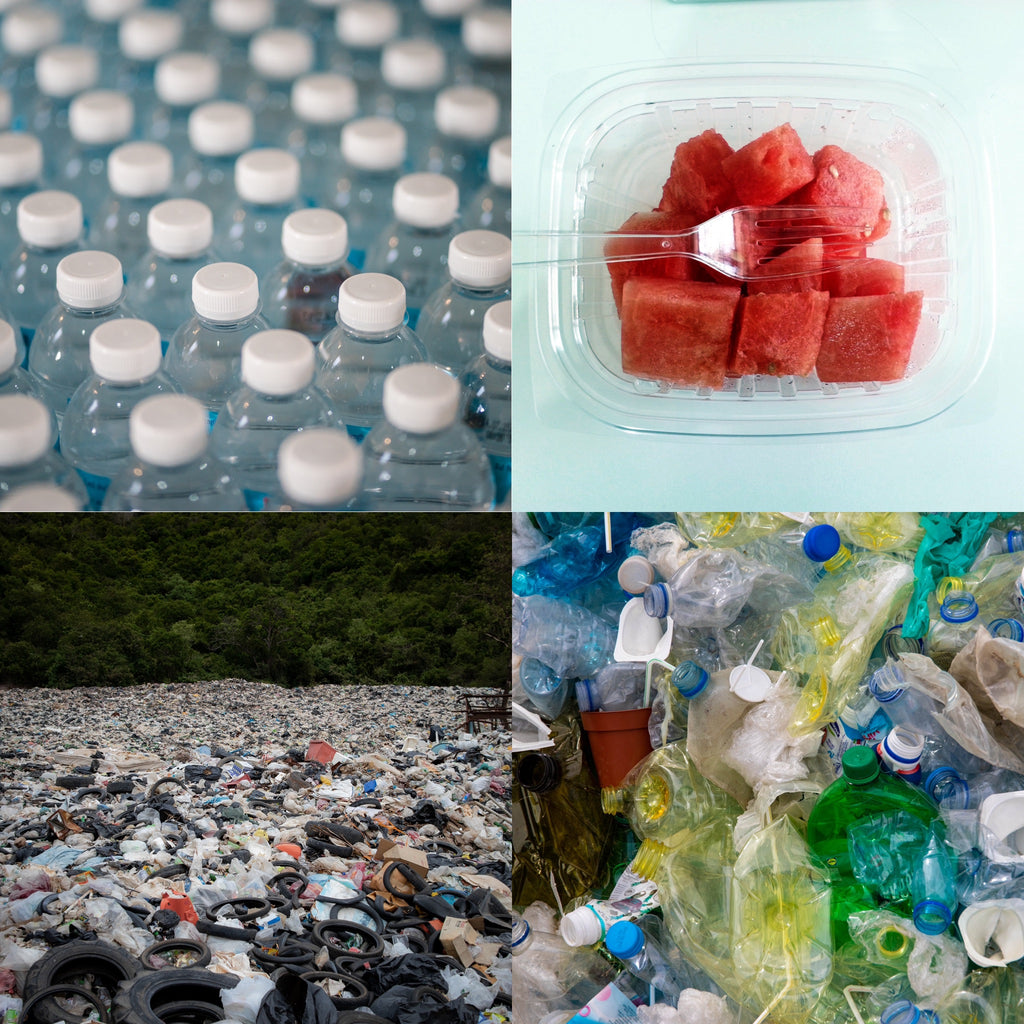By Courtney Sturniolo
Purchasing eco-clothing is a fantastic step towards minimizing your footprint. Each Sugopetite signature piece – Tulip – uses 30 recycled, post-consumer plastic bottles! That’s 30 bottles that don’t end up in landfills. We’re proud of our eco-clothing and especially proud of our customers for prioritizing our planet in their fashion and consumption decisions – and we want to help you do more.
Only about 25% of the plastic produced in the U.S. is recycled. We all have to work hard to reduce our consumption of single-use plastic. Here are some great tips we’ve pulled together on (mostly) painless ways to reduce your plastic consumption.
1. Take reusable bags everywhere.
Many people have started carrying reusable bags for groceries. That’s a great step, but with an estimated 14 billion plastic bags used every year in the US alone, there is much more we can do. Keep reusable bags in your car or purse, and decline a new plastic bag everywhere you shop, including clothing stores, pharmacies, and convenience stores.
2. Drink from reusable cups.
When you order to-go drinks like your favorite specialty coffee, bring a sustainable beverage container – a lot of shops will offer a discount for bringing your own. Avoid bottled water! Plan ahead, and pack it in a reusable bottle that you can refill at water fountains along the way. This works for airplanes too. You’ll have to go through security with it empty, but there are always filling stations available and you avoid the mistake of throwing out a practically full bottled drink because you forgot to drink it in time.
3. Swap out bottles for boxes and bars.
Cleaning products for the home and personal hygiene are among the largest contributors to landfills. The personal care market has recently expanded to include high-quality, sustainable options for body wash, shampoo, and even shaving cream that come in a bar and not a bottle. Home cleaning products have options as well – many detergents come in powder forms that are packaged in recyclable cardboard instead of plastic bottles. And don’t forget that a homemade solution of vinegar and water
will replace a lot of cleaning products sold in plastic bottles.
4. Minimize single-use plastic tableware.
Keep reusable cutlery and dishes at work to wash and reuse, instead of throwing out a new plastic fork and Styrofoam plate every day. When you have guests at your home, treat them like the VIPs they are and use your personal tableware. Sure, it will take a few extra minutes to wash – but those plastic forks would take 1,000 years to decompose in a landfill.
5. Switch to cloth diapers.
Reduce your costs too! Cloth diapers are not only cheaper, but they also cut down the estimated 7.6 billion pounds of disposable diapers thrown out in the US every year – a football stadium of dirty diapers every day.
6. Buy cereals and snacks from bulk bins.
Bring reusable containers from home to buy cereals and snacks from your grocery store’s bulk bins. If you can purchase three fewer packaged grains per week, that’s 150 pieces of single-use plastic saved every year. Bonus points for bringing your own packaging for produce!
7. Reduce waste in general to reduce trash bag use.
Many of us are guilty of over-using convenience products that produce waste. We use paper napkins and paper towels without much thought since they are “biodegradable”. We throw out food which, despite being organic, is detrimental to landfills. When something breaks, we often replace it instead of trying to repair it, contributing to massive electronic and plastic waste. We throw out clothes instead of mending a small tear, fixing a hem, or resewing a button.
Switch to reusable items, like cloth napkins and rag towels. Compost food waste. Recycle paper and plastic. Repair some worn or slightly damaged items. These simple, sustainable changes will go a long way towards reducing your trash production. By some estimates, the average 2-person household
throws out 1.5 large bags of trash per week – or 75 large bags of trash per year! If you were able to reduce your trash by one third, you could eliminate 25 bags of waste sent to landfills each year.
8. Re-think your food storage.
Reconsider all of the times you are using plastic baggies, plastic wrap, and single-use plastic storage containers. Use jars or glass containers and re-use plastic containers to eliminate Ziploc bags and Saran wrap. If you usually take home a doggie bag from a restaurant, bring your own reusable containers and pack your leftovers yourself.
9. Minimize prepared and packaged food.
Prepared food, especially from the grocery store, is typically over-packaged in single-use plastic. We all know that homemade meals from whole foods are healthiest in terms of added salt, hidden calories, and added sugar. Planning ahead and preparing your own food is better for the environment and your health!
10. Avoid buying new plastic clothing.
While eco-clothing is the best option, sustainable fashion is a very young market. This niche of the industry isn’t yet large enough to offer a perfect solution for every requirement. Sometimes, you have to go with traditionally sourced garments, and in the fashion industry, there is a range of options.
A new polyester dress USES as many plastic bottles as a Sugopetite dress recycles, but that’s just the start. Regular polyester also requires six times as much energy to produce, compared to our eco-friendly Chitosante fabric. And most clothes, especially inexpensive clothes, are made in the poorest regions of the world, where workers are exploited and often forced to work in unsafe conditions.
You don’t have to buy into the industry’s worst practices. By choosing suppliers who use ethically sourced, natural materials and have transparent manufacturing practices, you can contribute to improving the fashion industry, even when eco-clothing options are not available.



Leave a comment: